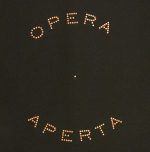STAGED PHOTOGRAPHY. MARCOS LOPEZ´S ASADO EN MENDIOLAZA

Marcos López (Argentinian. B. 1958)
Asado en Mendiolaza (Barbecue in Mendiolaza). 2001
Lambda print on aluminium panel. Hand-coloured photograph.
106,3 x 284,4 cm (including frame)
Asado en Mendiolaza just like all López´s work, can be analyzed within a postmodern context.
In the 1980s, a paradigm shift has occurred in the perception of photography.
From then on, photographic image will be perceived as a cultural construction, no longer as a truthful, objective and unmanipulated image. One important factor was the advent of digital photography.
In this respect, Lopez`s photography exposes the whole as construction, by leaving surface imperfections deliberately visible, like small scratches and pencil marks, as well as the use of a couple of flashes to give the effect of supernatural light, the sharpness of the figures, the silent and motionless (in real life this meeting with friends would be noisy and with a lot of movement) and digital retouching.
Theorists demonstrated that the meaning is influenced by context, presentation, conventions and ideological discourse, rather than by a privileged relation with reality. In this regard, Realism and Documentary photography (the most realist of photographic genres), were strongly questioned.
From the late 1970s, the staged photography (tableau image, photographic tableau) reappears. In this critical context, many artists appropriate, re-contextualize and recreate images borrowed from mass media, mass culture, art history, etc, in order to construct new narratives and deconstruct meaning, in a postmodern language: using irony (verging on the ridiculous); the comic; the pantomime; the kitsh; eclectic mixtures of cultured and popular, reality and fiction, global and local, etc.
Cindy Sherman, Laurie Simmons, Barbara Kruger, Tina Barney, Lucas Samaras, Sandy Skoglund and Jeff Wall are some of the exponents. Andy Warhol is not only a precedent for this strategy, but also is the most influential artist on Marcos López`s work.
According to the artist, this photograph is an argentinian version of the photographic version The Last Supper: Acts of God, 1999 by the Japanese photographer Hiroshi Sugimoto, which are in turn recreations of the mural painting by Leonardo da Vinci’s The Last Supper, 1498.
The scene is deeply ironic, absurd, grotesque, earthly (the subjects are focused on the act of eating), irreverently demystifying (Jesus (Juan Longhini) and his twelve apostles are local artists and professors from the National University of Córdoba), vulgarly immaculate, stereotypical (the classic argentinian barbecue, argentinian wine, argentinian football passion) and so kitshy.
This narrative picture is a parody, a comic version of an historical account. Is also an hybrid with elements from the high culture (the representation of the classic religious theme: The Last Supper) and popular culture (friends eating outdoors the barbecue, casual dress, football shirts, bad quality of demijohn wine and in carton packs, local canned beer, cheap trestle table, rechargeable soda sifhons, plastic salad bowls, etc ).
The reality principle is replaced by the pleasure principle. The appealing image has the sheen of advertising photography, with vibrant colours, showing the texture of under-development. The artist reinforces realism, not to increase the verosimilitude of the image, but to favour hedonistic consumption. This photography is a realistic representation of implausible situations, that is, real and strangely artificial, profaned and sacred. They feast was real, they actually drunk and ate the entire meal.
In the 1980s and ’90s, as the art market experienced a growth and the phenomenon of the institutionalization of photography took place, the photographic tableau in large-scale format was produced specifically for the space of the museums and art galleries. And the single image became more significant.
Asado en Mendiolaza is a large-scale tableau (106,3 x 284,4 cm). Two copies have been printed, one owned by the Spanish museum Reina Sofía.
Photographic tableau can be defined as a composition of staged people (or not, but resembles the tableau in form). Close to painting and theatre, the artist constructs the narrative, the image, creates the mise-en-scene, the environment, the emotion, etc.
In Asado en Mendiolaza the aesthetic is theatrical, the artist design the scene and sets the shot within a pictorial space.
The group poses facing forward but with a different configuration, postures, gestures and facial expressions than the mural. The subjects freeze in a theatrical attitude, this fleeting moment could never be reenacted. In this sense, the narrative picture captures a sense of passing of time. This photographs have the casualness of snapshots although were deliberately planned.
The precedent of photographic tableau is the tableau vivant, it was a popular pastime to recreate scenes from famous paintings or sculptures (as well as stories, poems, personalities and events). Since the invention of photography, tableaux vivants were performed for the camera. The photographers David Octavius Hill, Robert Adamson, John E. Mayall, William Lake Price, Henry Peach Robinson, Oscar Gustav Rejlander and Julia Margaret Cameron made photographic tableau vivant.
Eugenia Lardizabal
